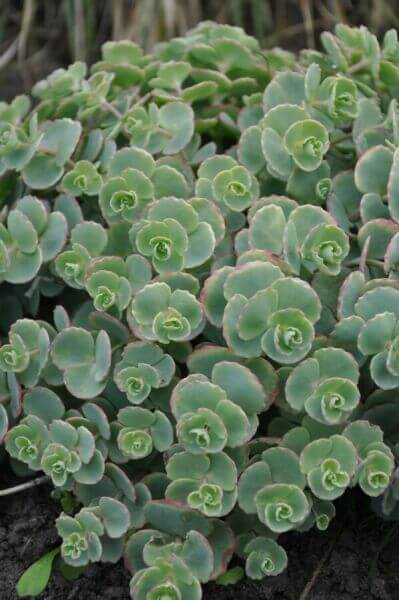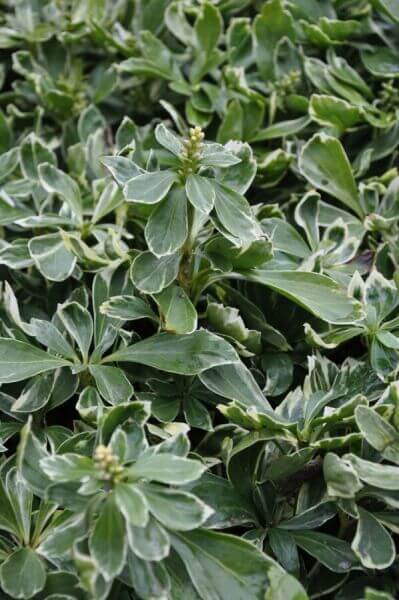Hedge Plants For Quick Privacy
Hedge Plants For Quick Privacy
Blog Article
Hedging Plants For Clay Soil
Boost your garden's attraction with lush hedge ranges such as Yew (Taxus), Thuja, Laurel, Photinia, and Bamboo, celebrated for their structural stability and ecological benefits.
Yew and Thuja supply evergreen coverage and winter durability, while Laurel uses rapid development and broad, aromatic leaves.
Photinia adds seasonal beauty with its dynamic red foliage, and Bamboo provides a low-maintenance, tranquil ambiance.
These hedges enhance air quality, lower noise, and produce tranquil, personal spaces.
Proper planting, spacing, and upkeep make sure vigorous growth and eco-friendly harmony.
Explore how these lavish ranges can elevate your garden's charm and wellness.
Secret Takeaways
Change Your Garden With Lush Hedge Ranges
- Select Yew for its dense, evergreen growth and unequaled durability.
- Opt for Laurel for its fast growth and broad leaves, guaranteeing fast personal privacy.
- Pick Photinia for its lively seasonal foliage, which turns a striking dark red.
- Utilize Bamboo for a low-maintenance, winter-hardy hedge with aesthetic appeal.
- Space plants 2-3 per meter and prune routinely for optimum growth and health.
Popular Hedge Plants
When transforming a garden with lavish hedge ranges, it's vital to consider popular hedge plants such as Yew, Thuja, Laurel, and Photinia due to their special attributes and advantages.
Yew (Taxus) is extremely respected for its durability and thick, green development, making it a prime option for enduring landscapes.
Thuja is kept in mind for its evergreen foliage and robust winter season durability.
Photinia includes seasonal vibrancy with red leaves that darken gradually, producing dynamic visual appeal.
Laurel provides quick growth and fragrant, broad leaves, ideal for fast personal privacy.
Furthermore, Bamboo is an outstanding choice for ambiance, offering a low-maintenance, winter-hardy alternative that boosts the garden's visual with its sophisticated, swaying walking sticks.
These selections deal with a range of horticultural requirements and choices.
Advantages of Garden Hedges
Garden hedges provide a wide range of benefits, making them an important addition to any landscape. These natural barriers are cost-efficient to carry out and offer significant wind protection, boosting air flow and contributing to sound reduction. The thick foliage of hedges like Thuja and Beech guarantees privacy by blocking exposure, developing a tranquil and secluded environment.
Hedges also play a crucial function in microclimate regulation, supplying a stable environment that cultivates plant growth and minimizes temperature level fluctuations. Their complex leaf structures filter pollutants, enhancing air quality and contributing to a much healthier garden ecosystem.
Furthermore, hedges master noise decrease, absorbing and deflecting acoustic waves to lower ambient noise levels. This double functionality of offering both visual and acoustic personal privacy enhances the general harmony and aesthetic appeal of any garden.
Planting and Upkeep Tips
For an effective hedge, meticulous preparation of the planting location is vital. Ensure the soil has appropriate pH and drain to support strong root development.
Space the plants properly for the picked species. Water the hedge often throughout its preliminary growth phase, changing as required with seasonal modifications.
Implement a methodical insect control and illness prevention method, utilizing organic or chemical treatments when needed. Frequently inspect for aphids, mites, and fungal infections.
Apply mulch to retain moisture and suppress weeds. Seasonal pruning promotes thick development and air blood circulation, essential for plant health.
Following these guidelines will help you cultivate a dynamic, properly maintained hedge that boosts the appeal of your garden.
Spacing and Trimming Guidelines
Spacing and Trimming Guidelines
Proper spacing and trimming are essential for cultivating healthy, visually appealing hedges. Appropriate spacing ensures each plant receives sufficient nutrients, light, and airflow.
Follow these guidelines for optimal hedge maintenance:
- Spacing: Position hedge plants 2-3 plants per meter to encourage robust growth.
- Pruning Techniques: Regular pruning is important for preserving preferred hedge height and shape. Trim new growth in summertime and cut back older wood throughout winter season.
- Seasonal Care: Change cutting approaches and schedules according to seasonal requirements to guarantee plant health.
- Hedge Height: Routinely screen and trim to maintain the wanted hedge height and attain consistent aesthetic appeals.
Adhering to these actions will guarantee your hedge flourishes, enhancing both the appeal and performance of your garden.
Picking the Right Hedge
Selecting the Right Hedge
Selecting the proper hedge includes evaluating aspects such as fully grown height, foliage density, and environmental strength. Effective hedge plant selection needs understanding each types' development characteristics and site-specific flexibility.
For example, Yew (Taxus) offers outstanding longevity and Browse around this site thick growth, while Thuja is significant for its winter strength. Furthermore, considering maintenance requirements is crucial; fast-growing types like Laurel or Privet demand routine cutting, whereas low-maintenance choices like Bamboo or Ivy may be preferable for those looking for minimal maintenance.
Environmental elements such as soil type, light availability, and wetness conditions need to also assist the selection procedure. This mindful method ensures the selected hedges will grow, providing both visual and functional advantages to the garden landscape.
Delivery and Planting Recommendations
To ensure your hedge plants flourish, they must be delivered by specialized couriers and planted immediately upon arrival.
Follow these essential steps for successful planting:
- Soil Preparation: Enhance the soil with raw material to improve drainage and nutrient material.
- Planting Depth: Develop a trench twice the width and equal to the depth of the root ball.
- Watering Strategies: Water thoroughly after planting, keeping the soil consistently moist however not filled.
- Mulching: Use a layer of mulch to retain moisture and suppress weeds.
Client Assistance and Service
Offered the crucial role of timely support in horticultural pursuits, our client assistance group is readily available 6 days a week through telephone, e-mail, and social networks to offer expert guidance and quickly attend to any issues. Their commitment to fast reaction times guarantees client fulfillment by solving questions connected to plant health, optimum planting approaches, and upkeep schedules.

-------------------
6 days a week
Within 24 hours
This extensive support group, enhanced by a stellar 9.3/ 10 customer score, highlights our dedication to improving the gardening experience for every single customer.
Regularly Asked Concerns
How Long Does It Take for Hedge Plants to Establish?
Hedge plants generally require one to three years to become fully established, with the exact duration varying by species and growing conditions.
Effective care throughout this important duration is necessary for robust development. Constant watering, watchful weed control, and suitable fertilizer application are critical in promoting strong root development.
For example, fast-growing species like Laurel may establish faster, while slower-growing ranges such as Yew may take longer. Persistent maintenance accelerates the facility procedure, leading to dense and healthy hedges.
What Are the Finest Hedge Plants for Personal Privacy?
The concern of the best hedge plants for privacy includes examining evergreen and deciduous choices.
Evergreen hedges like Thuja, Laurel, and Cypress provide year-round coverage, making sure constant privacy.
On the other hand, deciduous hedges such as Beech use seasonal privacy, shedding leaves in colder months.
Secret upkeep tips for personal privacy hedges consist of regular cutting, fertilizing in spring, and appropriate spacing-- typically 2 to 3 plants per meter.
In addition, consistent watering and diligent weed elimination are essential for promoting healthy, thick growth.
Can Hedge Plants Attract Wildlife to My Garden?
Yes, hedge plants can bring in wildlife to your garden by offering necessary advantages like shelter, food, and nesting sites, consequently enhancing regional biodiversity. For instance, yew, holly, and laurel are exceptional for drawing in birds, while ivy supports a range of bugs.
Nevertheless, it's important to keep in mind that there are some drawbacks, such as increased upkeep to handle pests and regular maintenance. Carefully choosing and maintaining hedge varieties can assist balance these downsides and benefits, ultimately cultivating a vibrant and sustainable environment in your garden.
Are There Any Flowering Hedge Plants Available?
Yes, there are flowering hedge plants readily available that can enhance the beauty of your garden.
For example, Elaeagnus, likewise understood as Olive Willow, produces fragrant white flowers in the fall, including a touch of sophistication.
Photinia, another popular choice, showcases vibrant red leaves that develop into an abundant green, creating a dynamic visual impact throughout the seasons.
To guarantee these plants grow, it's necessary to practice appropriate pruning methods and seasonal upkeep, such as cutting new growth in the summer and cutting down in the winter season.
These measures will help maintain the health and visual appeal of your flowering hedges.
How Do I Prevent Insects in My Hedge Plants?
To avoid pests in hedge plants, use natural pest control techniques and keep appropriate hedge care. Introduce advantageous pests like ladybugs, which victimize hazardous insects, to develop a well balanced ecosystem.
Regularly inspect your hedges for signs of infestation and immediately eliminate any affected parts to prevent the spread. Ensure the health of your hedges by using well balanced fertilizers and supplying adequate water.
Utilize mulching to retain soil moisture and correct spacing to lower plant tension and promote robust development. These practices collectively assist in decreasing insect problems and preserving a healthy hedge.
Conclusion
In essence, choosing the ideal hedge ranges such as Yew, Thuja, and Laurel can transform any garden into a peaceful haven. These plants supply year-round plant, boost visual appeal, and deal practical advantages like sound reduction and wind defense.
Correct planting strategies, precise spacing, constant watering, and seasonal cutting are crucial for optimal development.
Reliable shipment services and professional client support ensure a seamless experience from purchase to planting, making it simpler than ever to raise your outdoor area.
Garden hedges provide a multitude of advantages, making them a valuable addition to any landscape. These natural barriers are cost-efficient to implement and supply significant wind defense, enhancing air blood circulation and contributing to noise decrease. The dense foliage of hedges like Thuja and Beech makes sure privacy by blocking exposure, developing a secluded and tranquil environment.

Pruning Methods: Regular pruning is essential for keeping wanted hedge height and shape. Trim new development in summer season and cut back older wood during winter.
Report this page